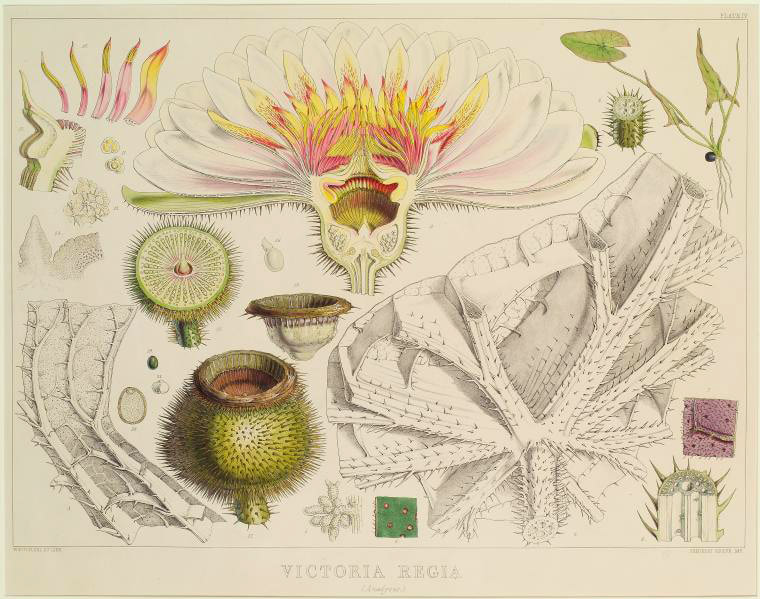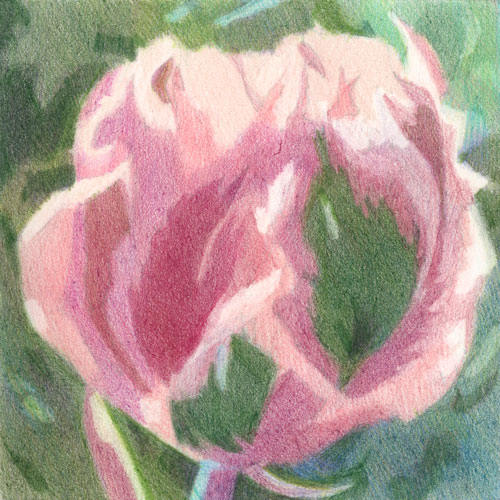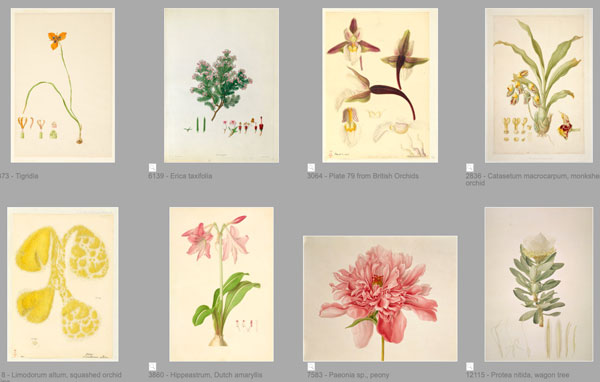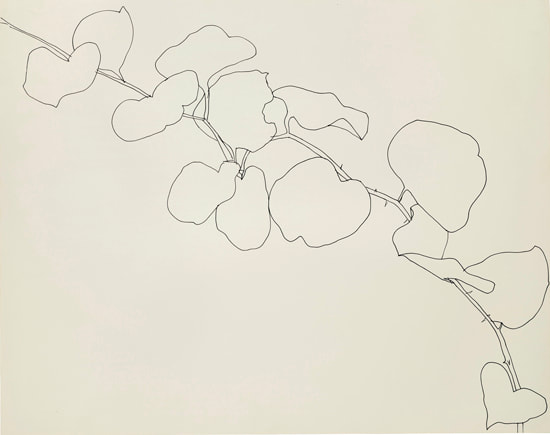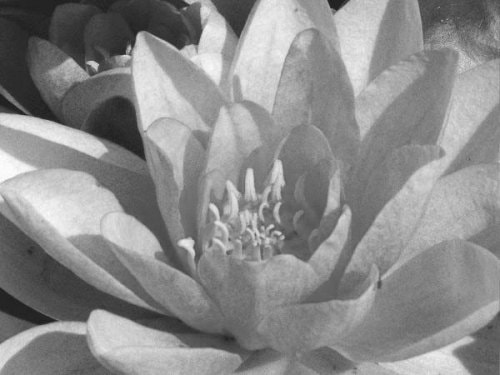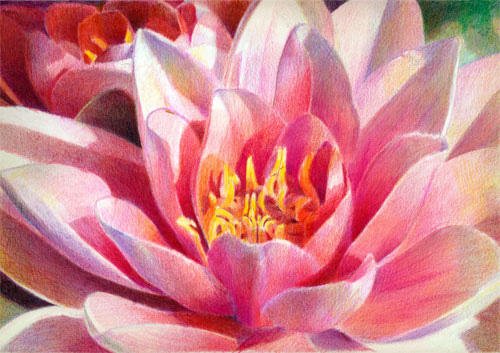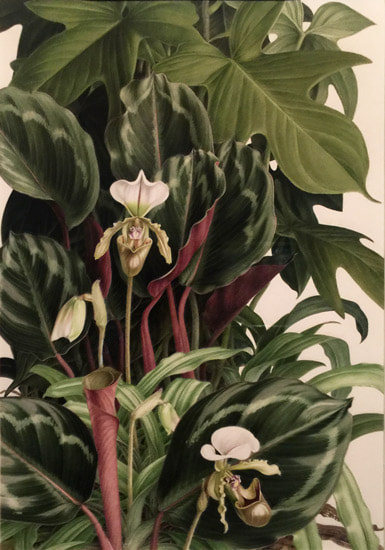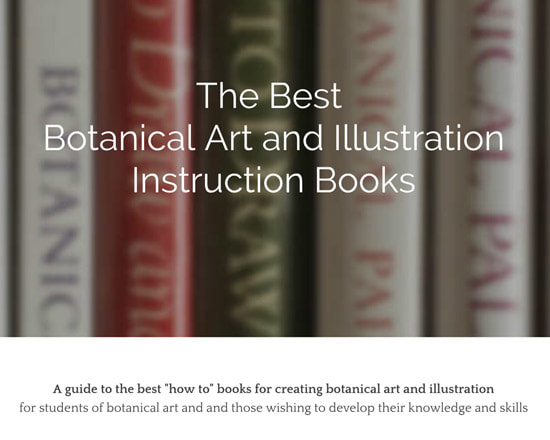- Home
- NEWS
-
HISTORY
- What is Botanical Art?
- What is Botanical Illustration?
- Botanical Art History Books >
- Herbals
- Florilegia and Flora
- Patrons of Botanical Art >
- Past Masters - Botanical Art and Illustration >
- Famous Asian Botanical Artists (600-1900)
- 20th & 21st Century Botanical Artists >
- Botanical Photographers
- Botanical and Herbal Art Online
-
ARTISTS
- Botanical Artists in the UK
- Botanical Artists in North America
- Botanical Artists in Europe
- Botanical Artists in Australia and New Zealand
- Botanical Artists in Asia
- Botanical Artists in Africa
- Botanical Artists in Latin America
- Botanical Printmakers, Photographers, Sculptors et al
- The Jill Smythies Award
- Botanical Artists on Facebook
- Botanical Art Blogs
-
Exhibitions
- Calls for Entries - OPEN exhibitions
- Online Exhibitions >
- RHS Botanical Art & Photography Shows >
- The Shirley Sherwood Gallery of Botanical Art >
- Hunt International Exhibition of Botanical Art & Illustration
-
UK
>
- North America >
- Europe >
- Australasia >
- Asia >
- Africa
- ARCHIVE: World Wide Exhibition of Botanical Art 2018
-
Education
- NEW BOOKS about Botanical Art and Illustration >
-
Best Botanical Art Instruction Books
>
- Tips and Techniques >
- Botanical Art Video Tips >
- Online Botanical Art Instruction >
- International Directory: Botanical Art Teachers
- International Directory of Botanical Art Courses >
- Artist Residencies, Scholarships and Bursaries
- Diplomas and Certificates >
- Distance Learning Courses
- Talks, Lectures & Tours
- Botanical Education on Facebook
- Materials
- Groups
-
Botany
- Why botany matters to artists
- Botany Books for artists >
- Scientific botanical illustration
- Plant Forms and Anatomy
- Plant Evolution and Taxonomy
- Plant Names and Botanical Latin
- Botanical Dictionaries
- How to Identify Plants
- Recording a Plant / Sketchbooks >
- Botanic Gardens & Herbaria >
- Blogs about Plants and Flowers
- Contact
One major aspect which differentiates "great botanical art" from "average" is the design and composition.
|
This page covers:
|
After you've collected your plant material and studied and made all the notes you need comes the challenge of the composition - how to portray your chosen plant.
In my opinion, composition and design is an aspect of botanical art and illustration which is not emphasised enough in many botanical art instruction books |
What should be included in a Design?
|
What gets included in your design probably depends on which end of the spectrum of botanical art and illustration you are working at
|
You might wish to include some or all of the following aspects and components:
|
What is Composition?
Composition: The plan, placement or arrangement of the elements of art in a work. It is often useful to discuss these in reference to the principles of design, as well as to the relative weight of the composition's parts.
Art Lex
|
RECOMMENDATION: Immerse yourself in LOOKING at the paintings of the great botanical painters of the past - who developed tremendous skill in fitting plants on to a page and making them look interesting and attractive.
You can review links to their botanical art online and access those links via
|
I highly recommend looking at the design and composition of paintings by the following:
Past Masters 17th - 19th Centuries
|
The Principles and Elements of Composition and Design
One understands composition to mean the bringing together of flowers and other plant components along with a certain unity of colours in order to achieve an overall effect
Redoute - quoted by Antoine Pascal (a student of Redoute) in "L'aquarelle, ou Les fleurs peintes d'après la méthode de M. Redouté : traité entièrement inédit, contenant des notions de botanique à l'usage des personnes qui peignent les fleurs. suivi d'un aperçu sur la manière de peindre le paysage [édition 1837]:
- and quoted by Anne-Marie Evans in her book
Essential aspects which you must think about
when developing a design include the various principles and elements of design.
when developing a design include the various principles and elements of design.
|
ELEMENTS of design are the building blocks
- they provide the structure for a design or an artwork.
|
elements of art or elements of design - The basic components used by the artist when producing works of art. Those elements are color, value, line, shape, form, texture, and space. The elements of art are among the literal qualities found in any artwork. |
|
PRINCIPLES of design include:
|
Principles of design or principles of art - certain qualities inherent in the choice and arrangement of elements of art in the production of a work of art. Artists "design" their works to varying degrees by controlling and ordering the elements of art. Considering the principles is especially useful in analyzing ways in which a work is pleasing in formal ways. How any work exhibits applications of these principles can further or modify other characteristics of a work as well. |
|
I find it helpful to think of the "elements" and "principles" of art and design as being very similar to the ingredients and method of a food recipe
|
|
Principles and Elements of Botanical Art Compositions
ELEMENTS OF DESIGN CHECKLIST
This section summarises questions to consider when thinking about the elements of design within a composition in botanical art.
This section summarises questions to consider when thinking about the elements of design within a composition in botanical art.
|
SHAPE
|
Tips and techniques
Notan is a word used to mean 'dark and light' as an element of design or composition of harmonic relationships. |
Notan is a Japanese concept involving the placement of lights and darks next to the other to read as flat shapes on the two-dimensional surface. This use of lights and darks differs dramatically from the means by which artists had traditionally manipulated these elements to create seemingly three-dimensional forms on the picture plane.
Georgia O'Keeffe Museum: Arthur Wesley Dow and American Arts & Crafts
|
FORM
Form describes the three dimensional mass of a plant (or group of plants) in space.
Many plants have particular / typical forms. |
Tips and Techniques
Examine plants using drawing studies and/or dissections eg.
|
|
SPACE
An element of art that refers to the distance or area between, around, above, below, or within things. It can be described as two-dimensional or three-dimensional; as flat, shallow, or deep; as open or closed; as positive or negative; and as actual, ambiguous, or illusory. |
Tips and Techniques
Consider:
|
|
LINE
A line is a mark made by a moving point and having psychological impact according to its direction, weight, and the variations in its direction and weight. Lines have different types and include:
|
Lines exist in nature - in describing shapes and forms.
Lines used in botanical drawings are typically not expressive or emotional - because the drawing is scientific rather than impressionistic
Tips and Techniques
|
Ever since I saw the Metropolitan Museum’s stunning show of Ellsworth Kelly’s botanical drawings, I have been ogling plants and plucking off branches to bring home and examine, like some Victorian naturalist. Thanks to Kelly, it’s not intricate blossoms that catch my eye, but plainer greenery with columnar stems and elegantly arcing stalks. I had never paid much attention to the ubiquitous ailanthus, so hardy it springs up in even the most desolate parts of New York, or the ginkgo tree, which fades into invisibility among majestic oaks. Kelly has made me notice. With a few stark swipes of a pen or pencil, he elevates the city’s prosaic flora into forms of ancient, noble simplicity. His genius is to help us perceive poetry in the banal backdrops of our lives.
REVIEW: Ellsworth Kelly Plant Drawings, Metropolitan Museum of Art, New York By Ariella Budick
|
TEXTURE - Plants are not flat.
|
Tips and Techniques
|
|
VALUES and TONALITY
Tones are what indicate shape and depth. Without values everything would be flat. Values in two dimensional artwork
|
Tips and Techniques
It's really easy to get confused between colour (hue) and tone (value) however there are various tools which can help you out
|
|
TIP / RECOMMENDED TOOL: You can make your own version of this - but I've always found this tool made by the Color Wheel Company to be
BUY Color Wheel 245557 3505 Gray Scale and Value Finder, Black/White
BUY GRAY SCALE VALU FIND 4"X6"
(Same tool - different descriptions
|
|
|
COLOUR - When representing colour accurately, your choices about colours are focused on other aspects of colour
|
Tips and Techniques
|
|
CASE STUDY
Note how in this painting by Pandora Sellars:
|
PRINCIPLES OF DESIGN CHECKLIST
This section summarises questions to consider when thinking about the elements of design within a composition in botanical art.
This section summarises questions to consider when thinking about the elements of design within a composition in botanical art.
- emphasis (largely synonymous with dominance)
- harmony (compare to unity, tension and variety)
- movement
- pattern (often paired with rhythm)
- proportion
- rhythm (often paired with pattern)
- unity (largely synonymous with coherence and homogeneity)
- variety (often contrasted with unity)
TO BE COMPLETED
REFERENCE - The 'Making A Mark' Composition Project
The aim of my Composition Project on my art blog in 2008 was to educate myself. I wanted to:
The following are all blog posts I wrote in relation to a major project about composition and design in 2008.
- focus on understanding the fundamentals relating to the principles and elements of composition and
- offer a range of tips and advice that I found as I researched my project
- provide links to more resources for those who wanting to pursue the topic in more depth.
The following are all blog posts I wrote in relation to a major project about composition and design in 2008.
|
The Basic Fundamentals
|
Useful "shortcut" techniques are listed below:
|
THE RULE OF THIRDS
The diagram below is the one I use to explain the rule of thirds and where the sweet spot is.
The diagram below is the one I use to explain the rule of thirds and where the sweet spot is.
- The 'rule of thirds' is an approximation of the 'golden ratio'.
- This diagram provides a comparison - using algebra and numbers of "the golden mean" and "the rule of thirds" plus identification of the 'sweet spot' area and how this can be used for the focal point
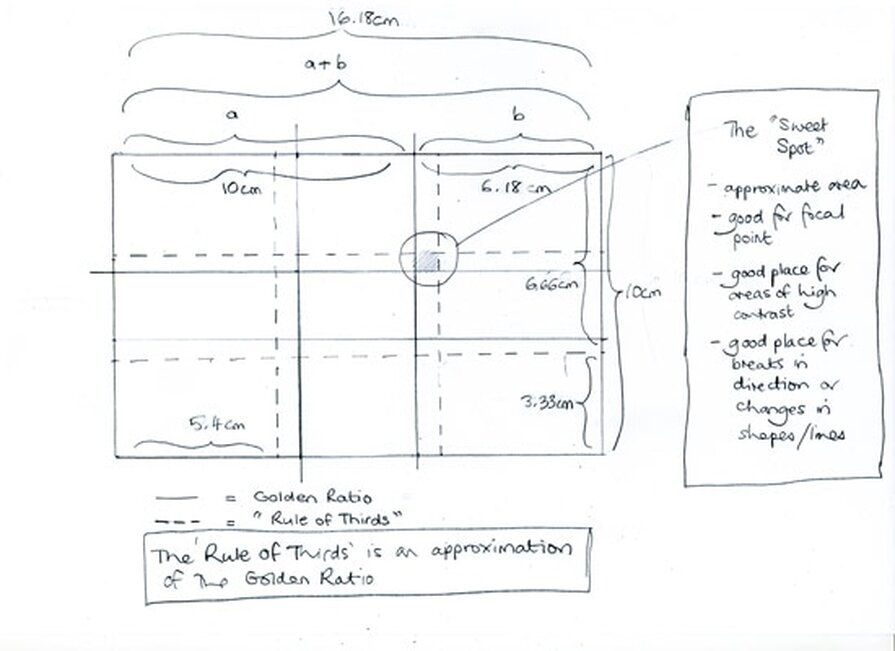
The diagram I use to explain the rule of thirds and where the sweet spot is.
The 'rule of thirds' is an approximation of the 'golden ratio'. This diagram provides a comparison - using algebra and numbers of "the golden mean" and "the rule of thirds" plus identification of the 'sweet spot' area and how this can be used for the focal point
copyright Katherine Tyrrell
(click on image to download for free for education/non-commercial use only)
Books about Composition in Botanical Art and Illustration
It is never too early to consider composition. Guidance in composition can be lacking in some early education of botanical artists. I have found that even experienced artist with superb technical skills may not always fully succeed in capturing a satisfying arrangement of the elements.
Elaine Searle
Most instruction books about Botanical Art and Illustration do NOT cover composition and design adequately.
Instead they very much tend to lean heavily towards the "how to" relevant to the handling of media and drawing and painting of petals, stamens, leaves, stems, spikes etc. and development of colours.
I only know one book which is dedicated to being a design guide for botanical artists
Instead they very much tend to lean heavily towards the "how to" relevant to the handling of media and drawing and painting of petals, stamens, leaves, stems, spikes etc. and development of colours.
I only know one book which is dedicated to being a design guide for botanical artists
The Botanical Art Files - Composition: The Design Guide for Botanical Artists
by Rita Parkinson (Author, Illustrator), Dolores Sk-Malloni (Illustrator)
by Rita Parkinson (Author, Illustrator), Dolores Sk-Malloni (Illustrator)
|
Presentation
Average Customer Rating out of 5 stars:
BUY IN THE UK BUY in the USA
|
Books which mention composition and design
However beautifully executed the painting, nothing will compensate for a poorly composed picture
The Art of Botanical Painting
Far too little is said about design and composition in many of the instruction books.
The net effect is I find it very easy to discern when viewing exhibitions to discern who understands design and who does not. Strong designs stand out, weak ones do not.
It's no coincidence that one of the reasons why very many excellent botanical artists and illustrators often have a background in illustration and/or graphic/commercial design is because they received a very thorough grounding in what makes for a good design as part of their art education. After that they just need to master the painting!
Bottom line - learning about how to execute botanical art is NOT just about learning how to draw and paint plants!
Lack of confidence in design and composition can also be the reason why botanical artists (and students) dodge complexity in composition and instead go for macro views of blooms or very simplistic designs.
The net effect is I find it very easy to discern when viewing exhibitions to discern who understands design and who does not. Strong designs stand out, weak ones do not.
It's no coincidence that one of the reasons why very many excellent botanical artists and illustrators often have a background in illustration and/or graphic/commercial design is because they received a very thorough grounding in what makes for a good design as part of their art education. After that they just need to master the painting!
Bottom line - learning about how to execute botanical art is NOT just about learning how to draw and paint plants!
Lack of confidence in design and composition can also be the reason why botanical artists (and students) dodge complexity in composition and instead go for macro views of blooms or very simplistic designs.
All too often the novice painter will dive straight in without paring time to consider the layout, which should be pleasing and harmonious. This means paying attention to the spaces between the component parts of the picture as well as the shapes created by the flowers themselves.
The Art of Botanical Painting
|
If you want to see what I mean, try inspecting the Contents Page and Index of most publications providing instruction on botanical art and illustration.
|
Personally I'm of the view that unless design is studied as a subject in its own right, it's very difficult to
|
SUMMARY OF HOW COMPOSITION IS TREATED IN DIFFERENT BOOKS
BELOW is a summary of the chapters and pages primarily devoted to composition in various instruction books - in order of the quantity and quality of the content. It's NOT finished and if you know a book you've found particularly useful please let me know.
LINKS TO BOOKS OR REVIEWS ARE IN THE TITLES.
BELOW is a summary of the chapters and pages primarily devoted to composition in various instruction books - in order of the quantity and quality of the content. It's NOT finished and if you know a book you've found particularly useful please let me know.
LINKS TO BOOKS OR REVIEWS ARE IN THE TITLES.
HIGHLY RECOMMENDED: An Approach to Botanical Painting (1993)
by Anne-Marie and Donn Evans
Chapter 8 "Composition: Arranging the Content" is 28 pages long.
by Anne-Marie and Donn Evans
Chapter 8 "Composition: Arranging the Content" is 28 pages long.
- This is one of a very few thorough-going and systematic discussions of all the different aspects that need to be considered when designing a composition in botanical art. It also discusses approaches to complex compositions and provides commentary on a number of examples of contemporary and historical botanical images demonstrating different ways of designing an image.
- This chapter is also of much value in that it also discusses aerial perspective, lettering (at length - one of the very few that do!), plant nomenclature and signatures and the addition of any non-plant forms.
- It's a particularly valuable contribution because design is discussed in the context botanical art history and how it has progressed from a flattened primitive illustration into an image which purports to resemble life.
When attempting a complex composition with many components grouped together in one painting, the relative position of individual sections is of the utmost importance. Not only does the shape, size and location of each portion need to be considered but also the shape and size of the background spaces which will appear between each portion.
An Approach to Botanical Painting - Anne Marie Evans
RECOMMENDED Botanical Illustration (2008) by Valerie Oxley
Chapter 14: Help! The Plant if Too Big for the Page (10 pages)
Chapter 14: Help! The Plant if Too Big for the Page (10 pages)
- This deals with the placement and design of the plant on the page and provides a very competent account of all the practical and aesthetic aspects which you should be mindful of when designing a composition.
- She discusses: Scale; Placement and Design, Levels of Observation; The Boundaries, The Focal Point, Positive and Negative Space, Checking your Composition, Composition of Flowers, Planning a Layout, The Problem of Crossing Stems, Composition of Roots, Habitats, Illustrating Trees, Signature and Labels and a checklist of Reminders!
Placement and design of the plant material on the page is crucial to a good overall composition. The illustrator needs to create balance and harmony, contrast and rhythm within the design. The eye should be drawn into and around the picture. The overall design should not be so predictable that the viewer gives it only a cursory glance. Creating tension within a drawing to alert the eye and cvath the attention of the viewer. draws the onlooker into a picture. The viewer can be alerted by something unexpected, such as a change of colour, the particular direction of a line or a change of shape. Nature is full of contrasting colours and shapes; as an artist you need to take time to observe and select the most interesting material for your illustration Botanical Illustration - Valerie Oxley
|
Painting Flowers in Watercolour (2001) by Coral Guest
Botanical Illustration (1986) by Bobbi Angell
The Art of Botanical Painting (2004) by Margaret Stevens Chapter 9 is about Composition.
|
Botanical Illustration (2004) by Siriol Sherlock
Chapter 9: Plant Characters in Composition
The Botanical Illustrator's Handbook (2014) by Sally Pinhey
Botanical Drawing Using Graphite and Coloured Pencils (2017) by Sue Vize
NOTE: This is an UNFINISHED analysis.
|
Other recommended books about composition and design
BELOW are links (in the titles) to my blog reviews about other recommended books about Composition and Design
- which are NOT related to botanical art
Greg Albert - The Simple Secret to Better Painting
- a recommended read and the book I always recommend to people who want to learn more about composition and design.
- which are NOT related to botanical art
Greg Albert - The Simple Secret to Better Painting
- a recommended read and the book I always recommend to people who want to learn more about composition and design.
This is a book which you can come back to again and again. It's a 'basics' book for those wanting to learn more about composition and design and it can also act as a 'pick you up' for more advanced artists who feel they're getting stale and need a visual boost. This book makes composition as a topic both accessible and understandable to art students and would-be artists who've been ducking out of improving their knowledge of composition. For those who tend to neglect the importance of composition because it's 'too difficult' or there are 'too many rules' or there is 'too much to think about' there is now no excuse! my book review of Greg Albert - The Simple Secret to Better Painting
Mastering Composition - a recommended read
Ian Roberts, the author, covers all the basics and more. He
Ian Roberts, the author, covers all the basics and more. He
- identifies steps on the path to mastery of composition,
- explains key concepts and
- provides practical exercises so that you can employ them.
Mastering Composition: Techniques and Principles to Dramatically Improve Your Painting is an excellent book by Ian Roberts for all those who want to learn more about helpful principles and techniques for composition and design. It's all about understanding the structure and dynamics of the picture plane and planning your artwork. In my opinion it has something useful to say to both experienced painters and those starting out - and I've already got it tagged as one of those books I won't be lending out! I highly recommend this book to all those seeking to improve their skills in design and composition.
Composition and Design - A Digest #1 - includes reviews of
- Composition A series of exercises for the use of students and teachers by Arthur Wesley Dow (Author), Joseph Masheck (Author)
- Pictorial Composition by Henry Rankin Poore.
- The Elements of Drawing (1857) by John Ruskin and never out of print!
- You can search the text for specific terms on this Ruskin College Oxford website
- Letter 1 concerns the basics of drawing which involve the elements
- Letter 3 concerns itself with "On Colour and Composition" and Ruskin's 9 laws
- It appears you can download a complete copy from the University of Toronto Canadian Libraries.
- If you want to buy a copy, then I recommend that you get the edition which was edited by Bernard Dunstan RA which includes his annotations which make it much more accessible. (Available from Amazon.com or Amazon UK)
Courses about Composition
Usually I list courses in the Courses section but thought it worthwhile highlighting courses specifically about Composition here.
Links to more information can be found in the course title
Links to more information can be found in the course title
- Composition Matters - a Paint Botanical Online Short course (£250) by Elaine Searle. Comprises video and two exercises and assignment with feedback
Let me guide you through an approach to composition. Learn how to establish clear focal points, balance space, colour and texture. Why and how to edit, cut, crop and much more. Composition Matters - Elaine Searle
More tips about Composition
|
Details should not be put on as an afterthought – or look as though they have been. Decide before starting your composition whether or not details are to be included. |
Banner: Images of bananas from Plantae selectae quarum imagines ad exemplaria naturalia Londini, in hortis curiosorum nutritamanu artificiosa doctaque pinxit Georgius Dionysius Ehret v.1-10
Note ArtLex is no longer published. I retrieved the above definitions prior to its demise.
Resources about Botanical Art and For Botanical Artists
ABOUT: About the Author | Contact | Testimonials | Privacy Policy COPYRIGHT 2015-22: Katherine Tyrrell all rights reserved.
|
NEWS
News Blog about artists, awards, exhibitions etc. |
EXHIBITIONS
- Calls for Entries - Exhibitions around the world - Online Exhibitions - RHS Exhibitions - Hunt Exhibitions ORGANISATIONS
- Botanical Art Societies - national / regional / local - Florilegium & Groups - Botanical Art Groups on Facebook |
EDUCATION
- Tips and Techniques - Best Botanical Art Instruction Books - Directory of Teachers - Directory of Courses - Online Botanical Art Courses - Diplomas and Certificates - Talks, Lectures and Tours ART MATERIALS (Paper / Vellum) BOTANY FOR ARTISTS - Scientific Botanical Illustration - Best Botany Books for Artists - Plant Names & Botanical Latin BOTANIC GARDENS & Herbaria |
FEEDBACK
Please send me . - news to share - info. about exhibitions - any suggestions for what you'd like to see on this website ADVERTISE Contact me if you'd like to promote workshops and courses on this site. AFFILIATION This website is free to you but not for me! (See Affiliate Income below) |
|
Cookies, Personal Data & Privacy tells you how this site relates to and impacts on you and your privacy - and your choices.
Product & company names may be trademarks of their respective owners |
About Affiliate Income: This website has been created to share information not to make a profit. I am an Amazon Associate and earn from qualifying purchases (e.g. books from Amazon) which helps offset costs associated with maintaining this very large website.
|
- Home
- NEWS
-
HISTORY
- What is Botanical Art?
- What is Botanical Illustration?
- Botanical Art History Books >
- Herbals
- Florilegia and Flora
- Patrons of Botanical Art >
- Past Masters - Botanical Art and Illustration >
- Famous Asian Botanical Artists (600-1900)
- 20th & 21st Century Botanical Artists >
- Botanical Photographers
- Botanical and Herbal Art Online
-
ARTISTS
- Botanical Artists in the UK
- Botanical Artists in North America
- Botanical Artists in Europe
- Botanical Artists in Australia and New Zealand
- Botanical Artists in Asia
- Botanical Artists in Africa
- Botanical Artists in Latin America
- Botanical Printmakers, Photographers, Sculptors et al
- The Jill Smythies Award
- Botanical Artists on Facebook
- Botanical Art Blogs
-
Exhibitions
- Calls for Entries - OPEN exhibitions
- Online Exhibitions >
- RHS Botanical Art & Photography Shows >
- The Shirley Sherwood Gallery of Botanical Art >
- Hunt International Exhibition of Botanical Art & Illustration
-
UK
>
- North America >
- Europe >
- Australasia >
- Asia >
- Africa
- ARCHIVE: World Wide Exhibition of Botanical Art 2018
-
Education
- NEW BOOKS about Botanical Art and Illustration >
-
Best Botanical Art Instruction Books
>
- Tips and Techniques >
- Botanical Art Video Tips >
- Online Botanical Art Instruction >
- International Directory: Botanical Art Teachers
- International Directory of Botanical Art Courses >
- Artist Residencies, Scholarships and Bursaries
- Diplomas and Certificates >
- Distance Learning Courses
- Talks, Lectures & Tours
- Botanical Education on Facebook
- Materials
- Groups
-
Botany
- Why botany matters to artists
- Botany Books for artists >
- Scientific botanical illustration
- Plant Forms and Anatomy
- Plant Evolution and Taxonomy
- Plant Names and Botanical Latin
- Botanical Dictionaries
- How to Identify Plants
- Recording a Plant / Sketchbooks >
- Botanic Gardens & Herbaria >
- Blogs about Plants and Flowers
- Contact

